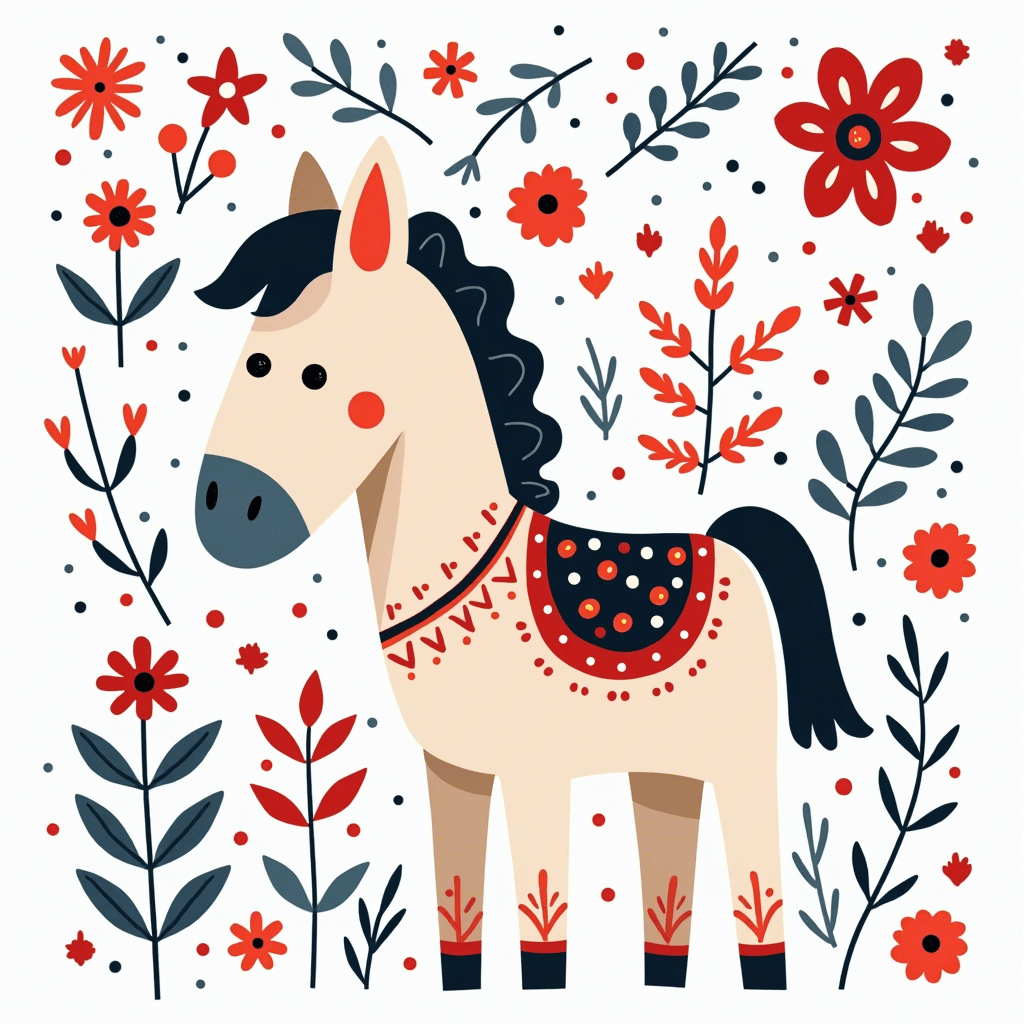
Scandinavian Folk Art
Traditional Scandinavian art style featuring whimsical floral and animal motifs, often used in textiles and woodwork, with a focus on simplicity and nature.
Quick Navigation
External Resources
Overview
Origin
Scandinavia (Sweden, Norway, Denmark)
Historical Period
17th century to present
Cultural Significance
Scandinavian folk art reflects the region's connection to nature and simplicity, often used in textiles, furniture, and decorative objects to bring warmth to homes.

Historical Timeline
1720-1800
Development of rosemaling in Norway
1800-1850
Peak of Dala horse carving in Sweden
1850-1900
Documentation and preservation efforts begin
Techniques
Hand-painting with bright colors
Carving and painting on wood (e.g., Dala horses)
Floral and animal motifs
Symmetrical and repetitive patterns
Cultural Context
Scandinavian folk art reflects the region's connection to nature and simplicity, often used in textiles, furniture, and decorative objects to bring warmth to homes.
Did You Know?
Scandinavian folk art often includes the Dala horse, a carved wooden horse that became a symbol of Swedish culture and craftsmanship.